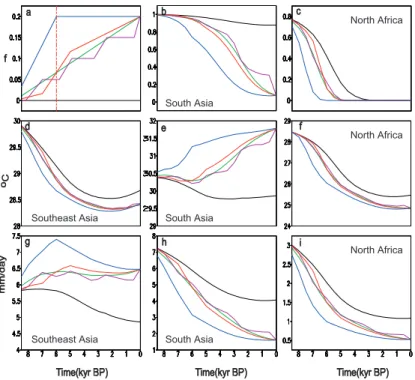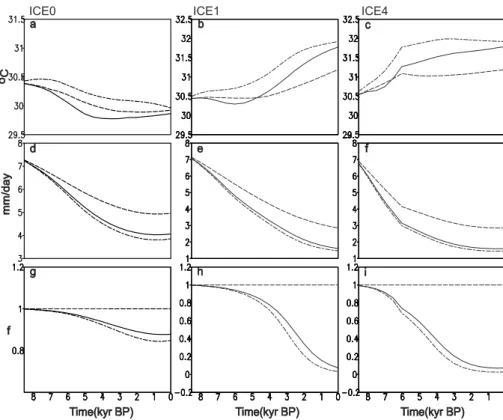Modeling sensitivity study of the possible impact of snow and glaciers developing over Tibetan Plateau on Holocene African-Asian summer monsoon climate
Texto
Imagem




Documentos relacionados
Figure 9 shows spatial distributions of monthly mean dust- induced change of precipitation from the WRF-Chem sim- ulations in June, July, and August averaged for 1995–2009 over the
episodes (26.0–28.0 kyr cal BP, 30.0–31.4 kyr cal BP, 44.5– 53.4 kyr cal BP and 66.1–86.8 kyr), the Mediterranean Basin was dominated by strong meridional oceanic circulation with
Here, we investigate the mid- to late-Holocene fluctuations of Gualas Glacier, one of the northernmost outlet glaciers of the North- ern Patagonian Icefield, using a
Further, the PMIP2 and PMIP3 models all simulate a smaller and thinner Arctic summer sea-ice cover in the mid-Holocene than in the pre-industrial control climate.. The PMIP3 models
In autumn, the most of the precipitation differences between mid-Holocene and present-day climate (in total: 0.53 mm/day) can be attributed to the direct response of the atmosphere
This study focused mainly on the influ- ence of the summer monsoon on the seasonal cycle and geo- graphic distribution of boundary layer O3 over East Asia, by the application of
While the changes of summer monsoon over South Asia and south- ern China are mainly controlled by global climate conditions (e.g. warmer sea surface temperature), the summer
This summer rainfall deficit over India during the summer monsoon is the largest impact of the vegetation changes to land precipitation, and the weakening of the Tropical Easterly